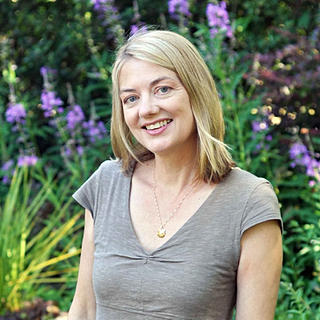Publishing Kids Books
- Laurie Elmquist
- Oct 31, 2018
- 4 min read
How did you first get published?
I was having tea with a friend of mine who is a poet, and she was working on a board book. I said to her, “What’s a board book?”
“You know,” she said, “they’re for babies and have those stiff covers.”
She showed me a few of them, including Richard Van Camp’s Little You, illustrated by Julie Flett. I write poems and stories, and I quickly thought, Wouldn’t it be wonderful to write a poem and have such beautiful illustrations? Back in my car, I took out my journal. I had recently come back from a trip to Mayne Island and I started to write down some of the creatures I’d seen, such as the goose waddling up from the bay and the purple starfish.
I wrote the whole poem in my car, and gave it a title based on a Beach Boy’s song, Beach Baby. Then I went home and typed it up. The same day, I sent it to Orca Book Publishers. I thought, If I hesitate, I’m never going to do it. And that’s how I got my first book for children published.
How has publishing changed since you first started publishing?
My first book for children came out in 2016, so it wasn’t so long ago. But I think one of the biggest changes I’ve noticed in the industry is the way diversity is being celebrated. There is room for everyone to tell their stories. Monique Gray Smith’s My Heart Fills with Happiness is a huge success, as is her recent award-winning book, Speaking Our Truth. As well, I just want to mention Pride by Robin Stevenson a book that taught me a lot about the roots of the Pride Parade.
Another change I’ve discovered is that in the last five years publishers are putting a lot of resources into getting their books into the American market. For example, American sales account for between 60-65 per cent of books sold by Orca Book Publishers. What does that mean to writers of children’s stories? I can only say what it means to me. It means Beach Baby has some very local creatures (purple starfish) and some Californian creatures (pelicans and sand pipers). In Forest Baby, the lilies and dragonflies could be found anywhere in North America. I worked hard with my editor, especially on Forest Baby to give the book this wider appeal.
Do you have an agent?
I have an agent for adult fiction and nonfiction books, but I don’t have an agent for my children’s fiction. Right now, I’m working directly with Orca Book Publishers.
What are your top three tips when preparing work for a publisher/agent?
1. Make the writing the best it can be on every level. The story is in place, the characters are compelling and the writing is clean. Think of someone on the other side who is very busy and whose job is not to work on your manuscript but to sell it.
2. Know all the submission requirements. If they ask for a manuscript that is 8000 words, send it to them. Don’t ever tell yourself, This story is so good. It’s just 6000 words but they can throw in a few more illustrations. Instead, ask yourself if there’s a subplot that could be developed that would deepen the story, and provide those missing 2000 words.
3. Make sure there’s a strong through-line. The forward-moving story has to be in place. No matter what age, the reader wants to know what happens next. A four-year old taught me this lesson, but I think it’s equally applicable to adult novels. It sounds very plot-based, but it’s not. It just means that the writer has a strong sense of whose story they’re telling and where the story is going.
What’s it like working with a publisher when an illustrator is involved?
It’s not as collaborative as people usually think it is. The writer is on one team (writer and editor) and the illustrator is on another team (illustrator and designer). When it comes time to see a cover or illustrations, I’m brought in at the very end, after all the negotiating back and forth, and final touches.
For me, it is one of the most exciting moments of the process. I want to see which of the scenes the illustrator has chosen to highlight. The first time I saw the illustrations for Where’s Burgess? (ages 7-9) I couldn’t get over how carefully the illustrator, David Parkins, had read the story. At one point, the main character, Reece Hansen, is talking to his neighbour. The neighbour is walking his dog, and the dog has a bandage on its head. The illustrator not only has the bandage in place but such a look of woe and embarrassment on the dog’s face.
When my editor explained to me how the illustrator, David Parkins, was chosen, she said they wanted someone who would bring a certain earnest quality to the pictures. It’s not a zany story with a lot of comedy. It’s about a boy trying to come to terms with the loss of his frog and his parent’s recent separation. It’s all about the expression on the characters’ faces, and I think if you look at those pictures, you’ll see what I mean.













Comments